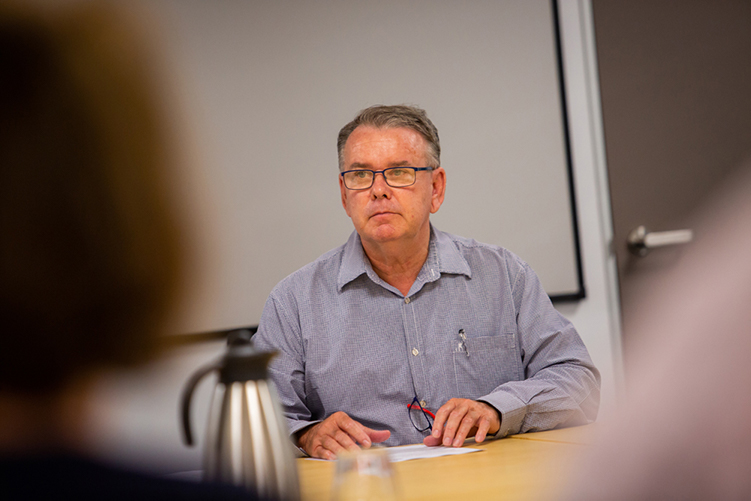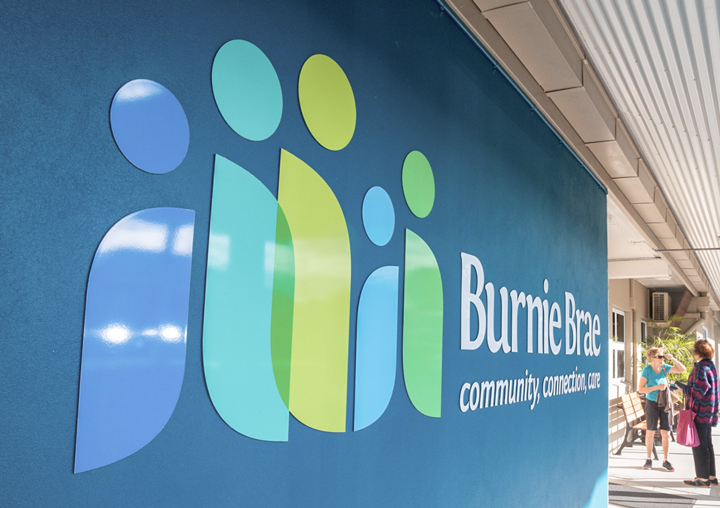A WILLINGNESS to constantly adapt and a strong focus on wellness has seen Burnie Brae become an Australian success story. With community, connection and care as its core values, Burnie Brae brings together government-funded and community-based support, and has become an example in aged care provision for the rest of the nation.
In fact, it has become so good at what it does that the largest retirement group in New Zealand will open its first Burnie Brae-style centre in April 2021 based on the Brisbane model.
“On one side are the government-funded aged care services we provide and on the other is the community focus; the members who come in to borrow a book from the library, have a haircut, organise a holiday or bus trip, or meet up at the café,” CEO Kevin Rouse says.
“As community services grew, we wanted to focus on wellness and re-ablement, so walking groups and exercise classes and other more physical activities were added to ensure that members could be as fit as they could be for a long as could be.”
The early years
It all began in 1977 and right from the beginning, Burnie Brae recognised social changes and willingly adapted.
The Chermside Rotary Club identified a growing population of seniors in the area and that there were very few facilities for them, and decided to open a Senior Citizens Centre.
Rotarians set about forming the organisation, chasing up loans and land, and built the centre at the site still occupied in Kuran St, Chermside. It opened in 1984.
The name Chermside and District Senior Citizens Centre Inc. was quite a mouthful, so Rotarians looked to local history and came up with Burnie Brae, the name of the site’s original homestead built by district pioneers the Hamilton family.
“It’s easier to say and it stands out,” Kevin says. “We have never considered changing the name, not even when we rebranded.”

In the beginning, the centre was used for meetings, dances and dinners, but as friendships developed so too did a caring family atmosphere. Services now funded by government were often unfunded back then and taken care of by volunteers.
For example, when someone with a partner needing respite care had to attend an appointment, the partner could be dropped off at the centre, where others would look after them.
Not surprisingly there was a membership rush and the Burnie Brae centre continued to grow, not only in numbers but in facilities and services.
When the federal government began rolling out funded aged care services, Burnie Brae added a day respite centre, a Meals on Wheels kitchen and expanded social activities in 1994 to support the growing and changing needs of the community.
Home maintenance assistance and transport services joined the list of government-funded aged services during the 1990s.
Gymnasium opens
The highlight came in 2011 with the opening of a gymnasium focused solely on seniors and staffed only by exercise physiologists, an early move that has kept Burnie Brae firmly at the forefront of an emerging field.
“No matter what condition people are in, whether suffering a chronic disease or newly-retired and wanting to get fit for a walking trip, the exercise physiologists can help,” Kevin says. “It has been a particular success.”
“People are amazed when they visit and see someone in their 80s pumping iron in the gym.”
Burnie Brae CEO Kevin Rouse
All programs have some form of resistance training so participants are building muscle that is essential to ongoing independence. As well as falls prevention, it ensures they can still get out of a chair or bed on their own and this can mean the difference between living independently or needing higher level care.
In 2015, Burnie Brae won national recognition when its Healthy Connections exercise and allied health clinic was named Exercise Physiology Clinic of the Year by the peak body Exercise and Sports Science Australia.
Burnie Brae member activities
Despite some transport and travel limits, visitors now come from all over Brisbane’s northside to take part in anything from tap dancing to pilates, mahjong to ballet, art to education.
“We don’t want our clients to just come in and see the podiatrist. We want to connect people into a class or the café or the hairdresser, or try some tai-chi ,” Kevin says. “The social aspect is integral to wellness. Covid has shown us that.”
While the main centre is at Chermside, Burnie Brae also has the Fitzgibbon Community Centre and community garden, a pilates studio at Enoggera and a community orchard in Chermside.
For 12 years, Burnie Brae has been running Project Pantry, which distributes food to seniors who have food security issues. They need only to be on a pension, no questions asked. Food is collected from a wide range of sources and cooked into meals. For $10 those who need it get $80 worth of food.
There are now about 10,000 members, of which about 30 per cent receive services. Some come in daily, others weekly, monthly or twice a year, but regardless, there is a connection.
“There is something for all levels of fitness and it keeps evolving as we expand into difference types of wellness activities,” Kevin says. “We have a big program now. We also try to engage people in different things, so if someone comes in to join an exercise program, they can also join a group in the café, or use our hairdresser or take a book from the library.”
What began as hundreds of members with a turnover in the thousands has become an enterprise with thousands of members and a turnover in the millions. There is little impost on government, but significant community benefit from income generated through the activity centre.
“The model we run hasn’t cost government a lot,” Kevin says. “We have rarely gone to government for expansion funds. Rather, seniors maintain their own building fund and do their own maintenance. It’s a great facility and it’s self-reliant.”
The constitution has also changed to adapt to changing times. Previously, members had to be over 55. Five years ago that changed to over 18 to allow younger people with disabilities to join, not just participate.
Looking to the Future
After 21 years at the helm steering the organisation into the new century, Kevin recognises that the tastes of the ageing generation are changing.
When he first arrived, there was a concert every Wednesday with entertainment from visiting singers or musicians, followed by morning tea. Amateur groups would put on productions on weekends. These days, members would rather organise a group to go to QPAC and then go out for high tea.
“There is a new group coming through and we are adapting to those new requirements. We have to keep evolving,” he says. “For example, members no longer want a bus trip. They want something more, a trip to Sydney or Europe, so we opened a Hello World travel centre here.”
And he recognises the digital presence will be huge in the future. Recently, 80 digital mentors were trained to help members using computers and devices.
The focus is very much on aged care services to help people stay at home, and Kevin likes to “pick members up as young as we can”.
“The earlier we start exercising, the earlier we can help prevent chronic disease developing; before people need aged care services and packaged care,” he says.
“This is about getting up off the lounge and doing simple exercises, the simple activities of daily living. If you can still walk to the corner and get on the bus you have real independence.”

